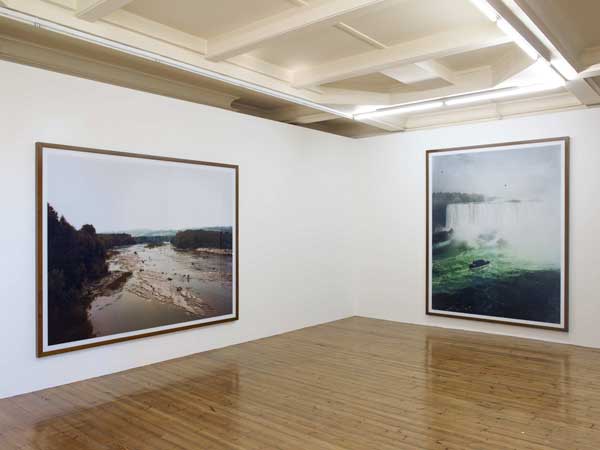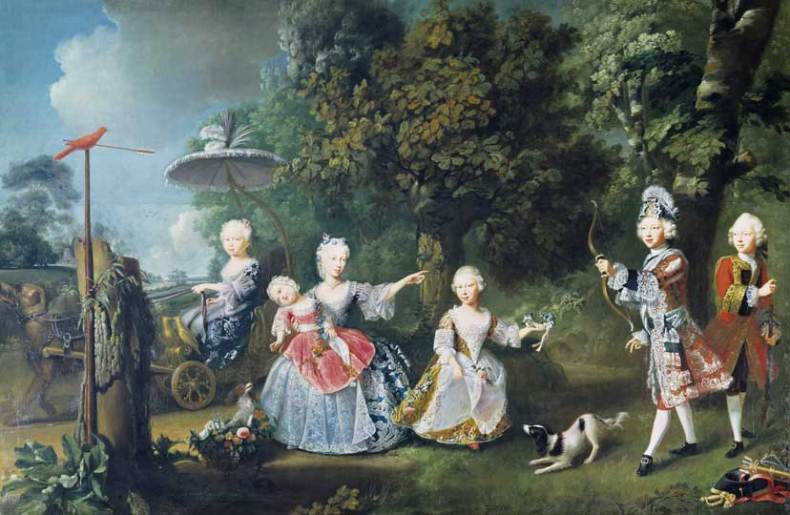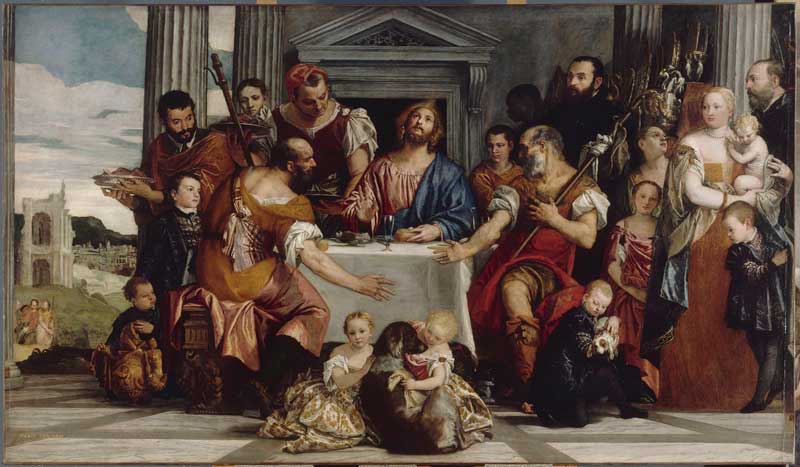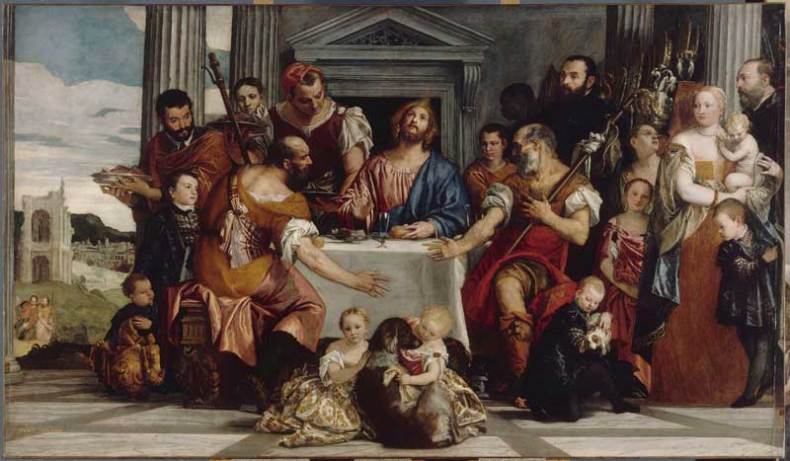A round-up of the week’s reviews…
‘Veronese’ at the National Gallery, London (Jonathan McAloon)
I feared I’d feel that desperation to be impressed by the works of a famous master, especially those which were painted to take up whole walls of palaces and cathedrals. But for all the grandeur, Veronese is touchingly loyal to the everyday. I therefore encourage people not to be put off by the ‘Magnificence’ strapline, or Veronese’s reputation for religious allegory, if that leaves you numb. This is an exhibition all about a brilliant imagination at work with life.

Installation view, Andreas Gursky, ‘Early Landscapes’, Sprüth Magers London, 15 April–21 June, 2014. Photography © Stephen White
‘Extraterrestrial’ views: Andreas Gursky photography displays in London (Lily Le Brun)
Andreas Gursky has an implacable, even way of looking at the world. Human drama is leached from his photographs to leave stubbornly plain pictures, reflecting a perspective that he has described as ‘extraterrestrial’.

‘The Horse, the Rider and the Clown’ (1943-4), Henri Matisse, © Centre Pompidou, MNAM-CCI, Dist. RMN-Grand Palais / Jean-Claude Planchet © Succession Henri Matisse/DACS 2013
Matisse’s cut-outs at Tate Modern are brimming with life (Lowenna Waters)
Oceania, the sky (1946) and Oceania, the sea (1946) are inspired by Matisse’s 1930–1 trip to Tahiti. Assorted marine forms float, cut from white paper on a taupe background. When first made, these delicate cut shapes were not glued to the studio wall, but were pinned where they would ripple like the ocean in the balmy Vence summer breeze.
‘Polke/Richter Richter/Polke’ at Christie’s Mayfair (Digby Warde-Aldam)
‘As an artistic pairing Gerhard Richter and Sigmar Polke should be considered in the same light as Bacon and Freud, or Picasso and Matisse,’ argues gallerist, writer and curator Kenny Schachter. A bold claim, certainly, but the fact is that looking at the canvases that surround us on the ground floor of Christie’s Mayfair, he may actually be understating the case. Richter and Polke’s paintings react off one another, the former providing a sober counterweight to the latter’s irreverent tangents.

The Children of Frederick, Prince of Wales (1746), Barthelemy du Pan. Royal Collection Trust © Her Majesty Queen Elizabeth II 2014
‘The First Georgians’ at The Queen’s Gallery (Martin Oldham)
As regular readers of this blog will know, this year’s tercentenary of the Hanoverian Succession presents an opportunity to celebrate the culture of the Georgian era. But the event we are actually commemorating, the accession of George I in 1714, has been somewhat overlooked in our indulgence of 18th-century taste and sophistication.
The Queen’s Gallery, Buckingham Palace, should therefore be applauded for bringing the circumstances of the Hanoverian Succession centre stage with an engaging and well-researched exhibition.
Unlimited access from just $16 every 3 months
Subscribe to get unlimited and exclusive access to the top art stories, interviews and exhibition reviews.
















![Masterpiece [Re]discovery 2022. Photo: Ben Fisher Photography, courtesy of Masterpiece London](http://www.apollo-magazine.com/wp-content/uploads/2022/07/MPL2022_4263.jpg)
The threat to Sudan’s cultural heritage